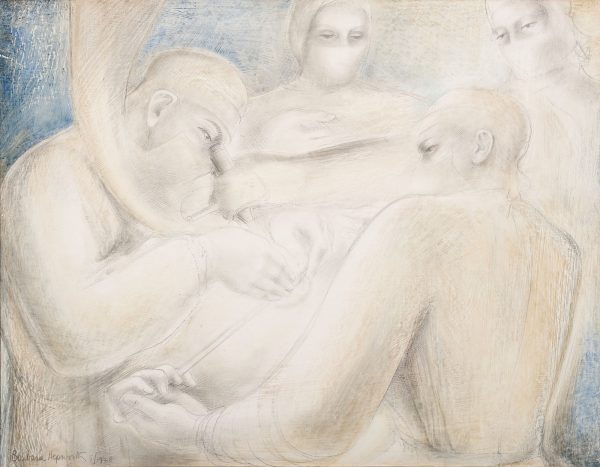In 1903 Barbara Hepworth was born in Wakefield, West Yorkshire. By the time of her death in 1975, she had become one of the most important artists of the century, creating a poignant and innovative sculptural language. She has two museums named after her – The Barbara Hepworth Museum and Sculpture Garden in St Ives, Cornwall; and The Hepworth Wakefield – an honour conferred on very few artists.
At the Ingram Collection we hold a number of important works by Hepworth. These are regularly requested for loan at museums and galleries across the UK and internationally.
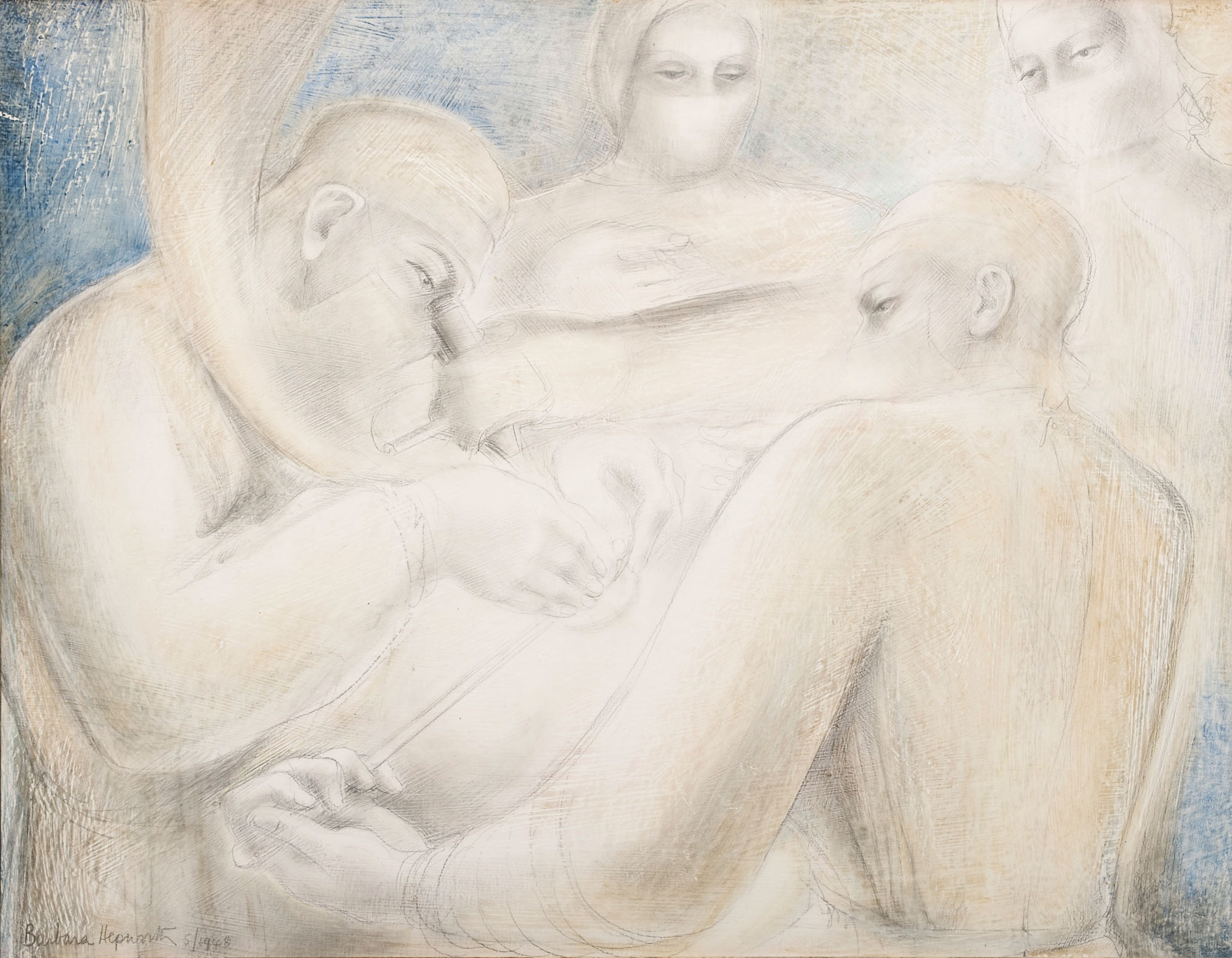
Barbara Hepworth, Fenestration of the Ear (The Microscope), 1948 © Bowness
The Hospital Drawings
In the late 1940s Hepworth made an exquisite series of drawings and paintings, using pencil and oil on board (such as Fenestration of the Ear (The Microscope), 1948) in addition to drawings in chalk and ink. Known primarily as a sculptor, Hepworth’s skilled draughtsmanship is a surprise to many. This painting was created after a two-year period (1947-49) in which Hepworth created a number of images illustrating surgeons at work. After the hospitalisation of her daughter, Sarah, in 1944, she struck up a friendship with surgeon Norman Capener and he invited her to sit in on operations. Hepworth felt there was a close relationship with the work of the surgeons using their hands and that of the sculptor, explaining in a lecture delivered to an audience of surgeons in the early 1950s that “There is, it seems to me, a close affinity between the work and approach both of physicians and surgeons, and painters and sculptors.” Her series of hospital drawings also took place at the time of the launch of the National Health Service (1948) – a change in society which had been embraced and supported by Hepworth. In our current climate, is important to acknowledge that there was a time before the NHS existed.
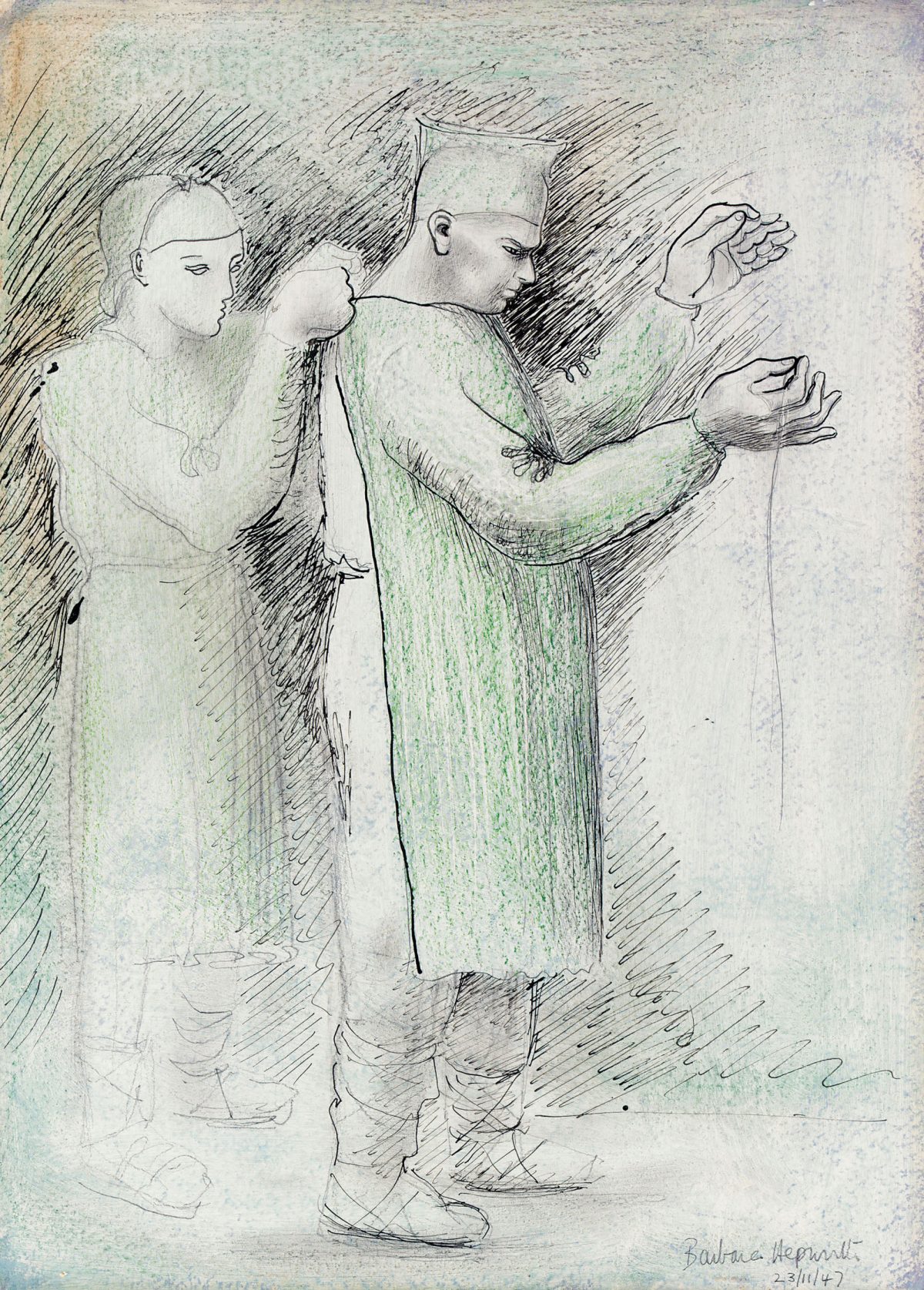
Barbara Hepworth, Two Figures, 1947 © Bowness
Sculpture with Colour and Strings
At the outset of the Second World War, Hepworth moved to St Ives with her husband and fellow artist Ben Nicholson. Limited artists’ materials and space restricted Hepworth to small-scale sculptures. Throughout her life she used a variety of materials and methods. In the late 1930s she explored the interiors of round shapes with string and colours. This work shows how comprehensively she had absorbed the language of European Modernism and become one of its leading exponents in Britain.
Resembling mysterious musical instruments, Hepworth’s stringed sculptures were inspired by the Cornish landscape. As she put it, ‘The colour in the concavities plunged me into the depth of water, caves, of shadows deeper than the carved concavities themselves. The strings were the tension I felt between myself and the sea, the wind or the hills…’ .

Barbara Hepworth, Sculpture with Colour and Strings, 1939/61 © Bowness
Construction I
Alongside Ben Nicholson and Henry Moore, Hepworth is considered to be one of the most important figures in abstract art in Britain. She lived in Cornwall for over 30 years and its landscape was one of the most important influences of her work. The sculpture Construction (Crucifixion): Homage to Mondrian, 1966, which this work reflects, can be seen in the grounds of Winchester Cathedral.
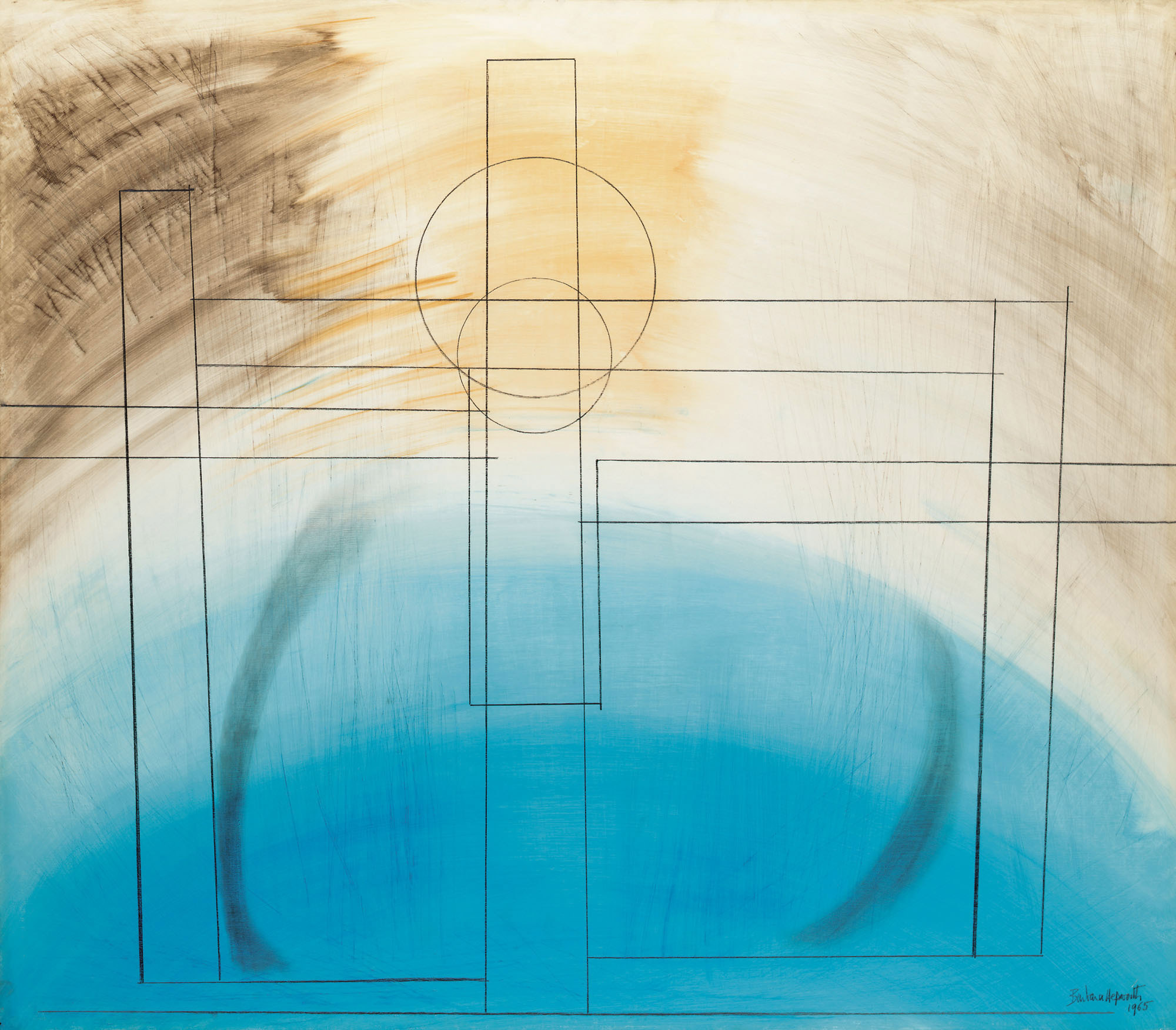
Barbara Hepworth, Construction 1, 1965 © Bowness
Granite Forms
Barbara Hepworth was one of very few women artists to achieve international prominence in the twentieth century. She is widely regarded as one of the most famous pioneers of abstraction in British art history. She had studied at Leeds School of Art, where she met Henry Moore, and the two sculptors developed a friendly rivalry which was to last throughout their lifetime. During her travels she encountered leading European Modernists such as Brâncusi, Arp and Picasso. Their influence can be seen in this work. She moved to St Ives in 1949, where she was to live until her death in 1975.
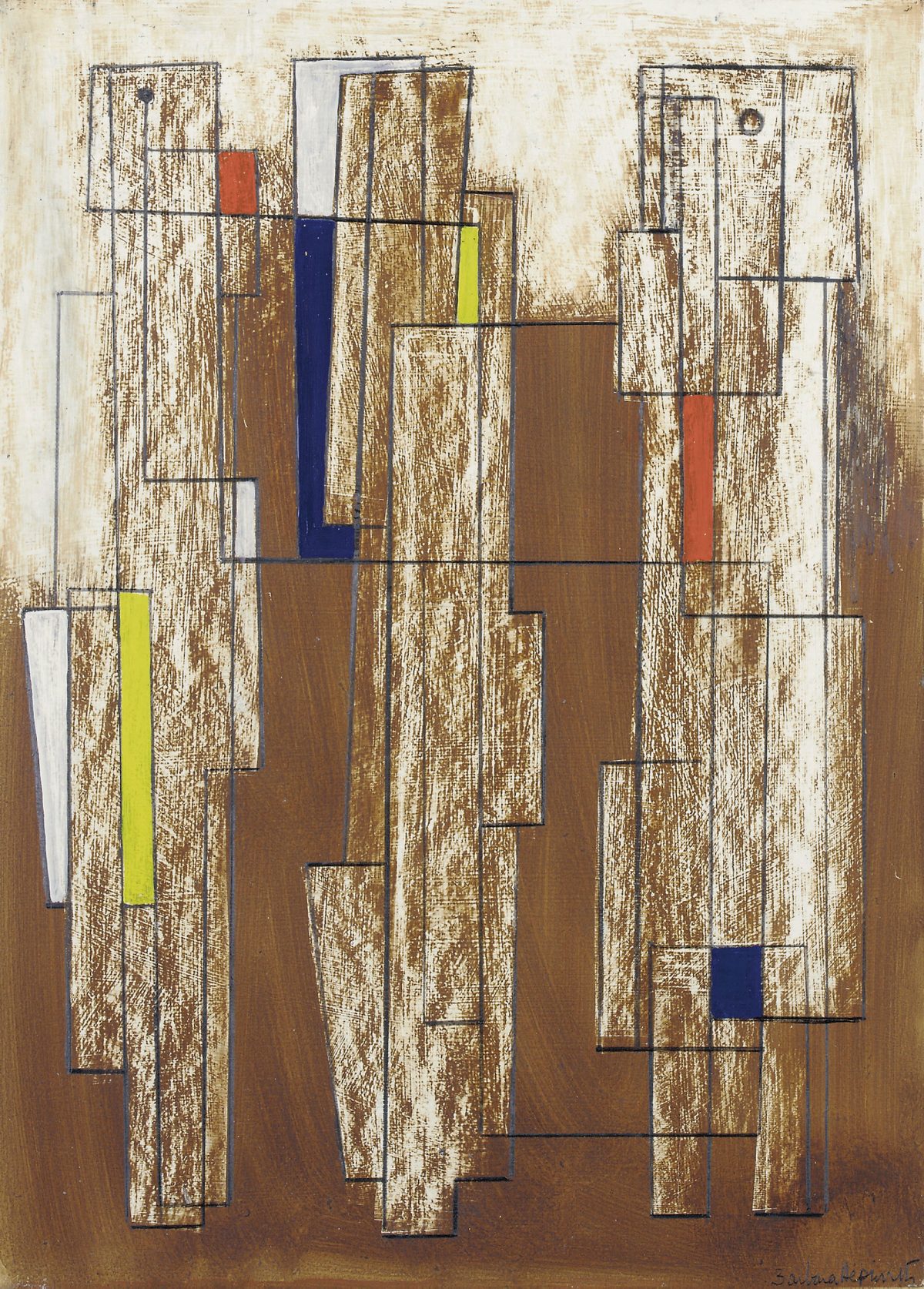
Barbara Hepworth, Granite Forms, Red Yellow and Deep Blue, 1953 © Bowness

